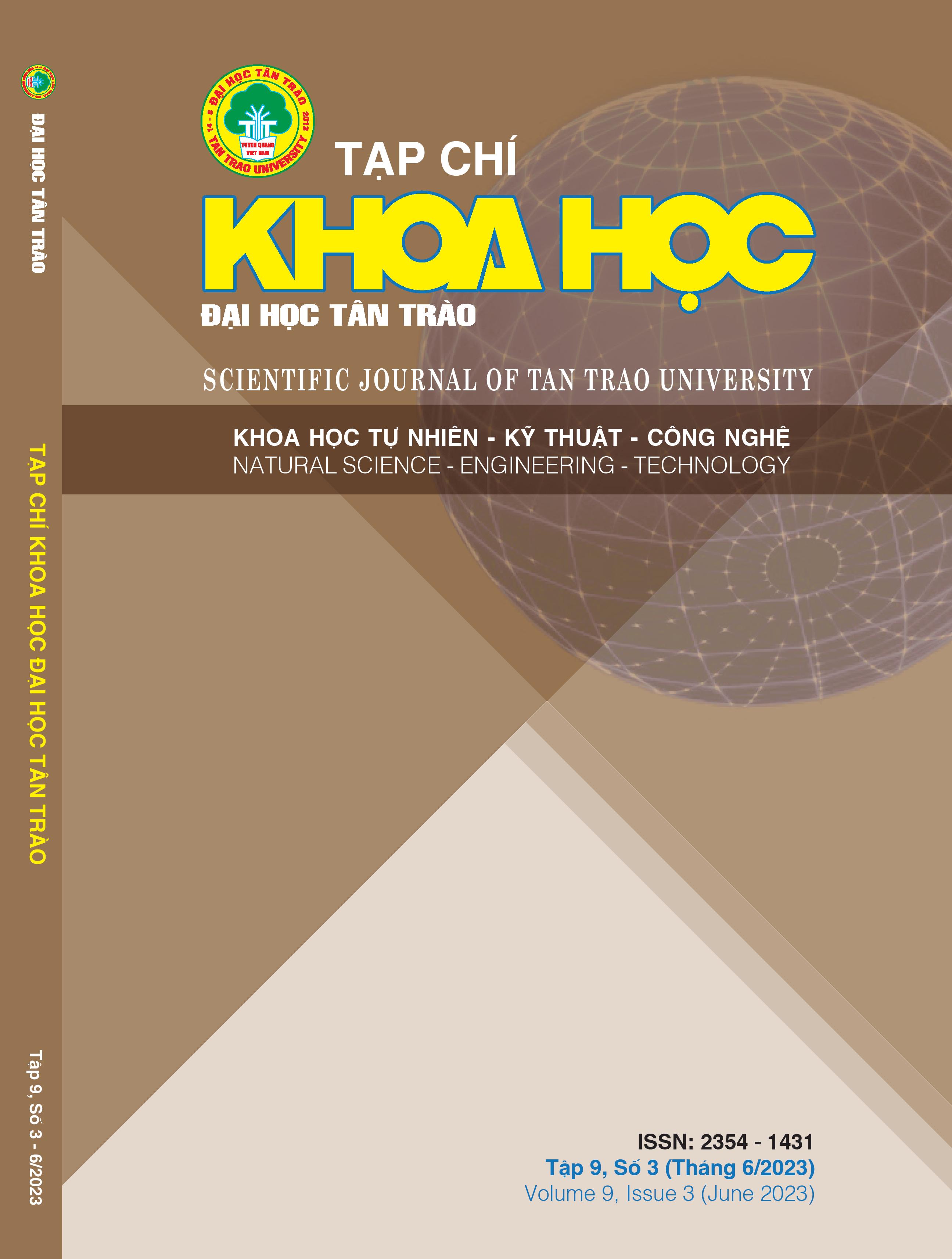ƯỚC LƯỢNG TƯ THẾ NGƯỜI 3D TRONG VIDEO THỂ THAO SỬ DỤNG MEDIAPIPE
DOI:
https://doi.org/10.51453/2354-1431/2023/975Từ khóa:
Bộ xương người 3D, Tích chập, Thần kinh, Mạng, Nhận dạng hành động tayTóm tắt
Ước lượng tư thế người là nghiên cứu quan trọng được áp dụng trong nhiều lĩnh vực như tương tác người máy, giám sát, phân tích thể thao, v.v. Từ đó có thể xây dựng được các ứng dụng trực quan và thiết thực với khoa học công nghệ và đời sống. Do đó việc ước lượng nhanh và chính xác tư thế người là một bước tiền xử lý nhưng rất quan trọng trong quá trình xây dựng các ứng dụng. Trong bài báo này chúng tôi đề xuất sử dụng Mediapipe, là một khung có sẵn của Microsoft cho việc ước lượng tư thế người 3D. Thử nghiệm được đánh giá trên cơ sở dữ liệu MADS (Martial Arts, Dancing, and Sports Dataset), trong đó chúng tôi tập trung vào các video thể thao như: basketball, volleyball, football, rugby, tennis and badminton. Sai số ước lượng trung bình là từ 100-200mm. Các kết ước lượng tư thế người 3D là một kết quả tốt trong hỗ trợ phân tích thể thao.
Tải xuống
Tài liệu tham khảo
[1] Y. Lin, X. Jiao, L. Zhao, “Detection of 3D Hu¬man Posture Based on Improved Mediapipe,” Journal of Computer and Communications, 11(02), 102-121, 2023, doi:10.4236/jcc.2023.112008.
[2] S. Radhakrishna, A. Balasubramanyam, “Economical Quaternion Extraction from a Human Skeletal Pose Estimate using 2-D Cameras,” 2023.
[3] S. Radhakrishna, A. Balasubramanyam, “Pedes¬trian Intention Classifier using ID3 Mod¬elled Decision Trees for IoT Edge Devices,” https://arxiv.org/abs/2304.00206, 2023.
[4] V.A.R.Barao, R.C.Coata, J.A.Shibli, M.Bertolini, J.G.S.Souza, “APPLICATIONS OF GOOGLE ME-DIAPIPE POSE ESTIMATION USING A SINGLE CAMERA,” Braz Dent J., 33(1), 1-12, 2022.
[5] J. W. Kim, J. Y. Choi, E. J. Ha, J. H. Choi, “Hu¬man Pose Estimation Using MediaPipe Pose and Op¬timization Method Based on a Humanoid Model,” Applied Sciences (Switzerland), 13(4), 2023, doi:10. 3390/app13042700.
[6] Bazarevsky, V., Grishchenko, I. On-Device, “Real-Time Body Pose Tracking with MediaPipe BlazePose,” Google Research, 2020.
[7] Denavit, J., Hartenberg, R.S, “A kinematic notation for lower-pair mechanisms based on matrices,” Appl. Mech. 1955, 77, 215-221, 1955.
[8] Kim, Tran, Dang, Kang, “Motion and walking stabi¬lization of humanoids using sensory reflex control,” Int. J. Adv. Robot. Syst, 2016.
[9] V. Goldberg, Available online, https://www.vicon.com/, 2021.
[10] J. W. Kim, T. Kim, J. Y. Choi, S. W. Kim, “On the global convergence of univariate dynamic encoding algorithm for searches (uDEAS),” Int. J. Control Au- tom. Syst, 2008.
[11] J. Yun, Choi, J.-W. Kim, S. Kim, “ Automatic detec¬tion of cracks in raw steel block using Gabor filter op¬timized by univariate dynamic encoding algorithm for searches (uDEAS),” NDT E Int, 2009.
[12] E. Kim, M. Kim, S. Kim, J. Kim, “Trajectory gener¬ation schemes for bipedal ascending and descending stairs using univariate dynamic encoding algorithm for searches (uDEAS),” Int. J. Control Autom. Syst, 1061-1071,2010.
[13] J. Kim, H. Ahn, H. Seo, S. Lee, “Optimization of So- lar/Fuel Cell Hybrid Energy System Using the Com¬binatorial Dynamic Encoding Algorithm for Searches (cDEAS),” Energies 2022, 2779, 2022.
[14] D. Goldberg, “Genetic Algorithm in Search, Opti¬mization and Machine Learning,” Addison Wesley: Berkeley, CA, USA, 1999.
[15] J.-W. Kim, T. Kim, Y. Park, S. Kim, “ On load motor parameter identification using univariate dynamic en¬coding algorithm for searches (uDEAS),” IEEE Trans. Energy Convers, 804—-813, 2008.
Tải xuống
Đã Xuất bản
Cách trích dẫn
Số
Chuyên mục
Giấy phép

Tác phẩm này được cấp phép theo Giấy phép Quốc tế Creative Commons Attribution-ShareAlike 4.0 .
Bài báo được xuất bản ở Tạp chí Khoa học Đại học Tân Trào được cấp phép theo giấy phép Ghi công - Chia sẻ tương tự 4.0 Quốc tế (CC BY-SA). Theo đó, các tác giả khác có thể sao chép, chuyển đổi hay phân phối lại các bài báo này với mục đích hợp pháp trên mọi phương tiện, với điều kiện họ trích dẫn tác giả, Tạp chí Khoa học Đại học Tân Trào và đường link đến bản quyền; nêu rõ các thay đổi đã thực hiện và các nghiên cứu đăng lại được tiến hành theo cùng một bản quyền.
Bản quyền bài báo thuộc về các tác giả, không hạn chế số lượng. Tạp chí Khoa học Tân Trào được cấp giấy phép không độc quyền để xuất bản bài báo với tư cách nhà xuất bản nguồn, kèm theo quyền thương mại để in các bài báo cung cấp cho các thư viện và cá nhân.
Mặc dù các điều khoản của giấy phép CC BY-SA không dành cho các tác giả (với tư cách là người giữ bản quyền của bài báo, họ không bị hạn chế về quyền hạn), khi gửi bài tới Tạp chí Khoa học Đại học Tân Trào, tác giả cần đáp ứng quyền của độc giả, và cần cấp quyền cho bên thứ 3 sử dụng bài báo của họ trong phạm vi của giấy phép.






